Samsung Galaxy S 4 Review - Part 1
by Brian Klug on April 24, 2013 12:01 AM ESTDisplay
We wrote about how we suspected that SGS4 would go to a 5-inch 1080p SAMOLED display just after CES. Turns out that was spot on, as the SGS4 includes a 5-inch 1080p Full HD SAMOLED panel, the latest in Samsung's AMOLED roadmap. Samsung's naming stays true, and there's no Plus tacked on at the end, so we get another non-RGB stripe subpixel geometry with SGS4. The last few Samsung AMOLED variants we've seen have had different subpixel grids, and the one on the SGS4 is possibly the most interesting to date. There's still a bias toward more green subpixels than blue or red, this isn't an RGB stripe at all, but instead of the previous RG,BG layout we see this offset pattern with green on one line, then blue and red on another line. Interestingly enough the blue subpixel appears to be a square, and red and green appear to be circles, with the difference in area possibly offsetting the luminous efficiency of each material. Whatever the reason (Samsung has never been official or forthcoming any of these subpixel patterns each time they've changed them) it's present on the SGS4.
At this size however I have to admit that I find the pursuit of the subpixel geometry more of an educational one than something which affects users. While I could occasionally see it on the SGS3, I definitely do not see it on SGS4. The subpixels are now small enough that whatever the pattern, it all looks like a homogenous light-emitting surface, which was the goal after all. I could bring up the visual acuity discussion again but just trust me that it's small enough to not be visible even with actually perfect (not legally perfect, which is different) vision.
So resolution is great and up to par with all the other LCD-bearing flagships this year, lack of RGB stripe notwithstanding. There's that remaining question about brightness, contrast, outdoor visibility, and of course calibration and the saturation issue that has persisted with AMOLED from generation to generation.
On the brightness front, the SGS4 includes dynamic contrast functions that cannot be disabled and change as a function of what is being displayed. There's an "auto adjust screen tone" checkbox under display but don't let that fool you, that doesn't disable dynamic contrast, just white point. Under screen mode are the mDNIe toggles we've seen on countless other previous Samsung Android phones with AMOLED panels, only here we notice something interesting. There have always been four toggles as long as this option has existed, only what's different is now, one of them is named "Professional photo." Reviews of other regional variants of the SGS4 have included the same button but marked "Adobe RGB." Oddly enough it seems that the North American versions at least have this renamed for some reason, but undoubtedly the function is the same. Many speculated that this is now a toggle for some full CMS (Color Management System) which "fixes" the inherent color space issues with AMOLED and oversaturation that occurs when looking at sRGB content on such devices. Unfortunately, I can confirm that my initial suspicions that this is just a continuation of the mDNIe (lite) settings from previous generation is in fact correct. I reverse engineered what I could of these settings from both kernel messages while changing the toggles, and looking at the kernel sources. Turns out that 'Professional photo' mode is actually the 'Natural' mode renamed from previous versions.
So the question was whether the color space or white point actually does change with this mode enabled. I ran the SGS4 through our display tests in each of the modes and think the full color space plot tells the story. The sanest of them all really ends up being the strangely-named 'Movie' mode. Professional photo gives the big gamut with a white point closer to 'Movie,' which is to say around 7000K, but it doesn't fundamentally change the still-present oversaturation or color management issue that exists in Android with these wide gamut displays. Most users admittedly don't care however and just see "bright" colors. Theres' an Auto mode as well which the device ships with that basically has a matrix of mDNIe settings for targeted applications (for example the Gallery, Browser, Video playback) and so forth get settings, which you can see in the kernel.
| CalMAN Display Comparison | ||||||||||||
| Metric | iPhone 5 | iPhone 4S | HTC One X | SGS3 | Samsung Galaxy Note 2 | Google Nexus 4 | HTC Droid DNA | HTC One | SGS4 | |||
| Grayscale 200nits Avg dE2000 | 3.564 | 6.162 | 6.609 | 4.578 | 5.867 | 7.686 | 6.738 | 5.391 | 7.511 | |||
| CCT Avg (K) | 6925 | 7171 | 5944 | 6809 | 7109 | 8506 | 8108 | 8118 | 7020 | |||
| Saturation Sweep Avg dE2000 | 3.591 | 8.787 | 5.066 | 5.460 | 7.986 | 8.517 | 5.856 | 3.365 | 7.823 | |||
| GMB ColorChecker Avg dE2000 | 4.747 | 6.328 | 6.963 | 7.322 | 8.185 | 7.531 | 6.687 | 4.656 | 7.440 | |||
In the "Movie" mode things are better controlled than the Note 2 on the GMB color checker card test, which is the most important one for me. White point is also no longer the crazy 8000K that we saw before, 7000K is commendable for Samsung at this point. Keep in mind that maximum brightness changes in each mode as well as we effectively clamp things, I measured a maximum of 319 nits in Dynamic mode, 311 nits in Movie mode, and 255 nits in Standard, for example.
Running the display at maximum brightness for too long will also get you into an overheating or thermal protection mode as well, which we've seen on countless other AMOLED variants. Most of the time I suspect users will run on Auto brightness however which keeps brightness down to a much lower level to save battery and prevent that from becoming a problem.
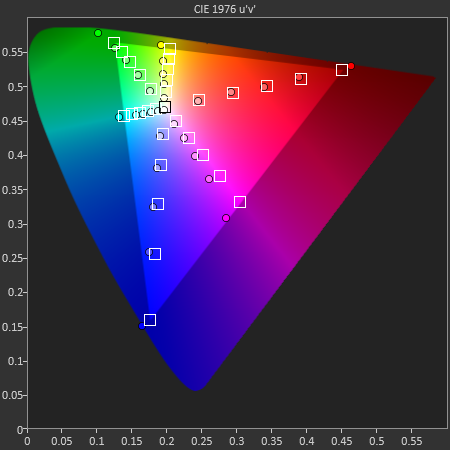
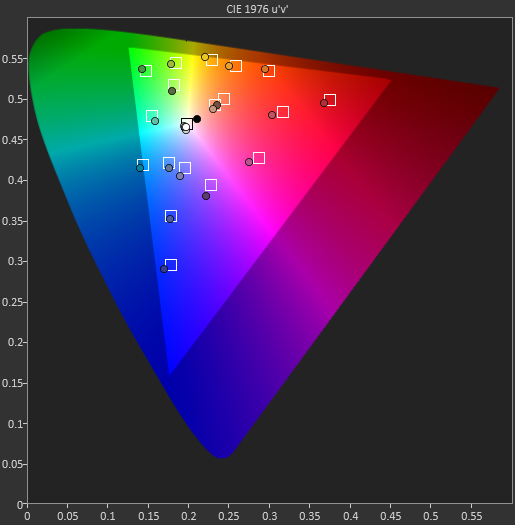
Because "Movie" was the closest to sRGB of all the modes, I selected it for the actual results that I'll present in the table. Admittedly this mode does tighten things up a bit, but it still isn't perfect and I'd still like to see Samsung do something to reign this in at some point.


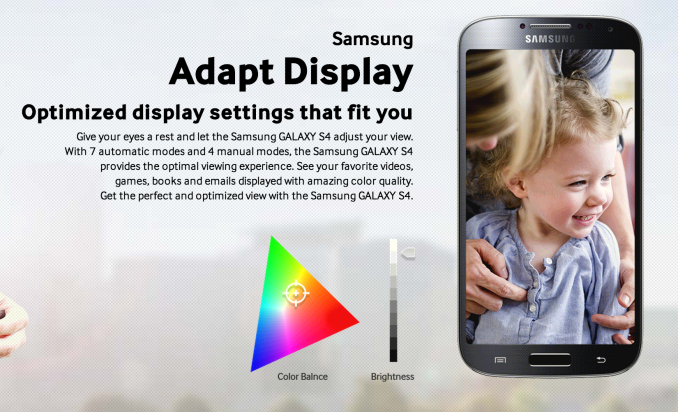




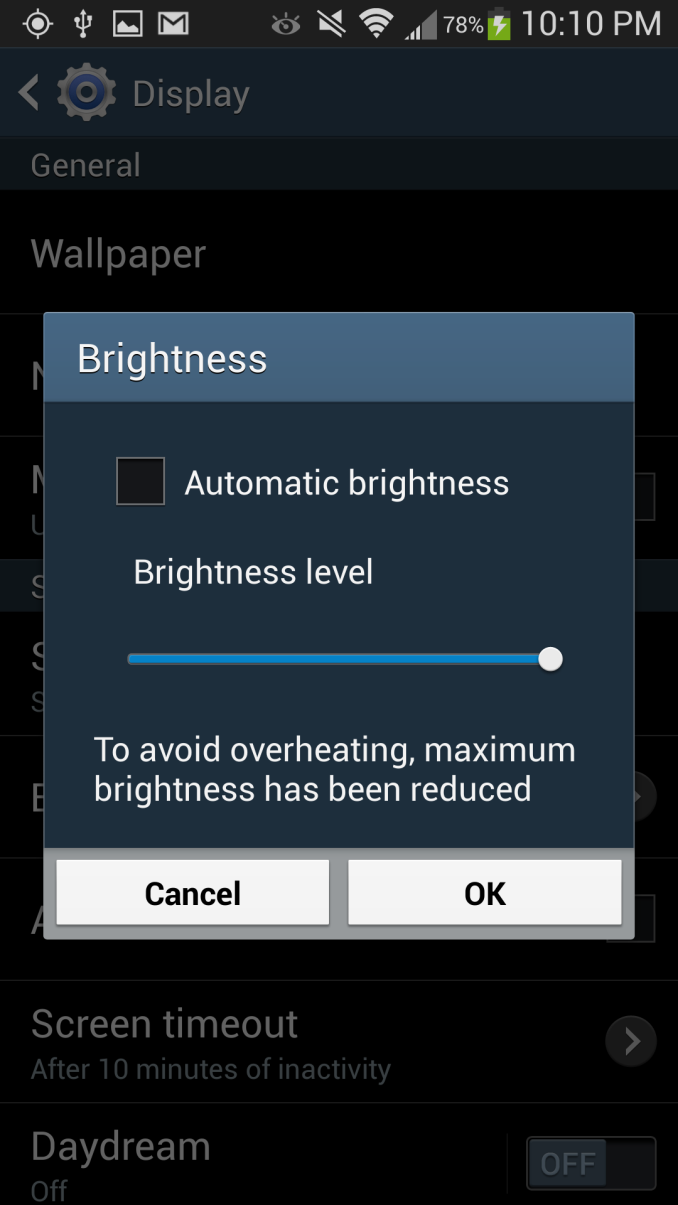
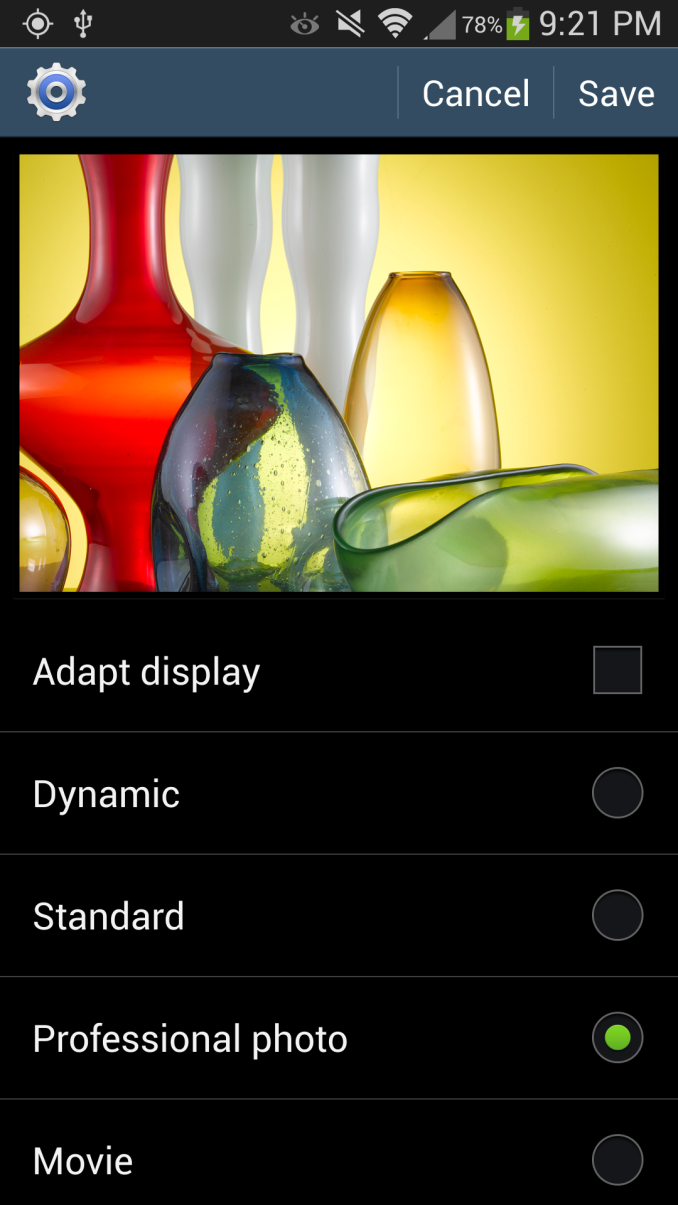
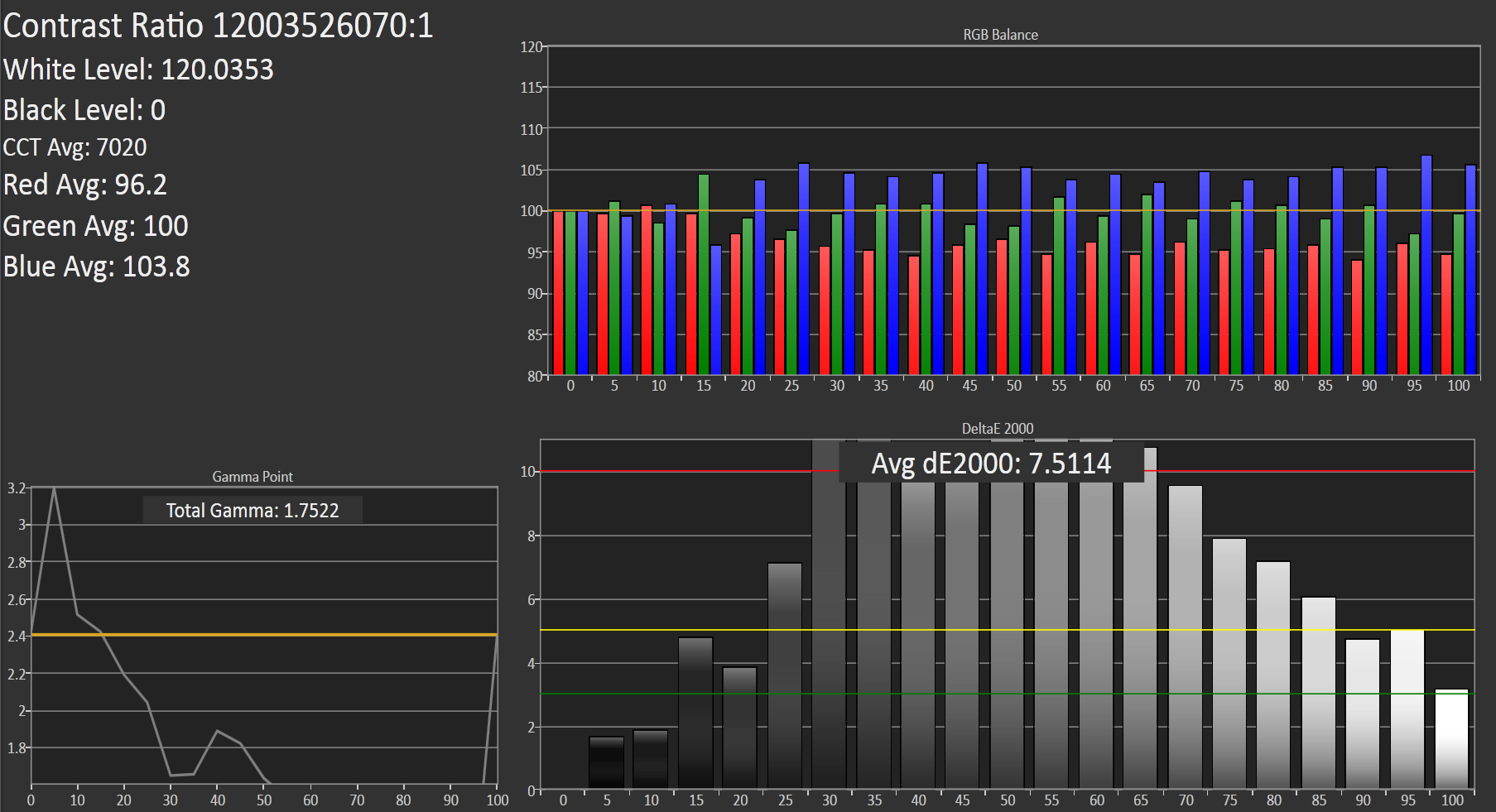








335 Comments
View All Comments
CoryS - Friday, April 26, 2013 - link
Eh, I actually think phones are getting too thin. I put a case on my GS3 because I kept fumbling it due to how thin it was.nerdstalker - Wednesday, April 24, 2013 - link
What's with the QUALCOMM 4G sticker on the top bezel of the device? :sHaserath - Wednesday, April 24, 2013 - link
They're using a Qualcomm Snapdragon SOC with integrated LTE (4g)modem, I believe.nerdstalker - Wednesday, April 24, 2013 - link
Going the Intel way. :PBrian Klug - Wednesday, April 24, 2013 - link
There's been a Qualcomm 4G sticker on the top of Samsung phones since, hmm, T-Mobile SGS2 and AT&T SGS2 (Skyrocket). Even the Droid Charge/Galaxy Nexus VZW edition which had no Qualcomm parts inside did, ostensibly due to some part of the OFDMA/LTE stack being licensed for CMC221, but that was never made clear.-Brian
nerdstalker - Wednesday, April 24, 2013 - link
Interesting. Thank you for the info.ranblv - Wednesday, April 24, 2013 - link
Idon't care about removal battery, I do however care about expandable storage. carrying an extra 32GB micro sd card in my wallet saved the day many times when I needed to shoot video or transfer docs.Great review, I don't always care that much for the minor details but I like it that someone like you is making sure they deliver what they say they do.
janosch.from.afar - Wednesday, April 24, 2013 - link
cannot understand why HTC cant simply add a tray to its smartphone side to insert a battery and sd card. Much like the iphones do it with their sim card tray.Besides, samsung could simply allow two sdcard slots, instead of one - but they should try to improve the SdExtcard mount first, so to being able install all software to it.
UpSpin - Wednesday, April 24, 2013 - link
It adds further parts to the bill list, makes the frame less sturdy because you have to drill a huge hole in the side, you have to add some mechanism to lock it and you have to route all wires on the opposite side, because the battery tray side gets lost for antenna, wires, parts. With plastic it's easy because you can bent the back and remove the whole back, with aluminum it's more difficult, you have to use screws.But I agree, it's still possible. For example they could have used some screws to attach the back. It might have looked even better with screws than without them, but easy swapping won't be possible, so it has little use at all and few people really take advantage of battery swapping, so they probably just risked it with a fixed battery.
And a sd-card could have fitted easily, just as you can exchange the sim card. But here again, it's important for some (I would like one, too), but the majority gets confused with a second storage which is more likely to fail and which can't get used like the internal one, and few understand this.
holyanan - Wednesday, April 24, 2013 - link
I have to say that the browsing time is really disappointing, i fail to understand why iphones provide with supposedly twice as much browsing time - which is one of the primary functions of a phone nowdays.